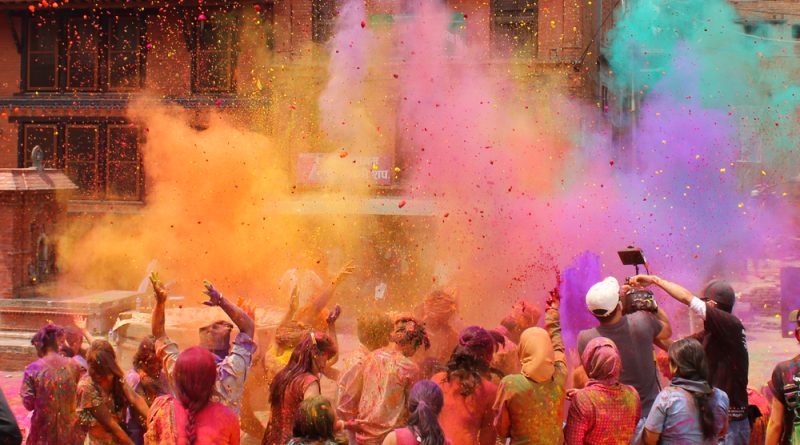Why Do People Worldwide Embrace Holi Festival Celebration?
Holi, the vibrant festival of colors, transcends geographical boundaries and cultural divides. Every year, millions across the globe come together in a riotous explosion of colors, laughter, and revelry. But what exactly makes Holi so captivating? Why does this seemingly simple act of throwing colored powder resonate with people from all walks of life holi festival celebration?
A Tapestry of Traditions: The Many Meanings of Holi
Holi’s allure stems from its multifaceted nature, weaving together a rich tapestry of cultural and religious significance. Here are some of the reasons why people worldwide embrace this joyous holi festival celebration:
- Celebrating Spring’s Arrival: Holi marks the end of winter and the beginning of spring, symbolizing new beginnings, fertility, and the triumph of life over dormancy. In a world often grappling with change and uncertainty, Holi offers a welcome respite, a chance to embrace hope and renewal.
- A Triumph of Good Over Evil: Rooted in Hindu mythology, Holi commemorates the victory of good over evil. The legend of Prahlad, a devotee of Lord Vishnu who defied his evil father, King Hiranyakashyap, resonates with the universal yearning for justice and the ultimate victory of light over darkness.
- A Time for Forgiveness and Reconciliation: Holi fosters a spirit of forgiveness and reconciliation. The playful throwing of colors transcends social barriers and allows people to mend broken relationships, forget past transgressions, and start afresh. The phrase “Bura na Maano, Holi Hai” (Don’t get offended, it’s Holi) exemplifies this spirit of letting go and embracing harmony.
- A Celebration of Community and Unity: Holi transcends religious and cultural boundaries, bringing people together in a shared experience of joy and merriment. It’s a time for families, friends, and even strangers to connect, shed inhibitions, and celebrate the spirit of community.
- A Feast for the Senses: Holi is a sensory overload in the best way possible. The vibrant colors, the sweet delicacies like Gujiya and Thandai, the rhythmic beats of dhol drums, and the infectious laughter create an unforgettable experience that leaves a lasting impression.
Beyond Borders: Holi’s Global Appeal
While deeply rooted in Indian culture, Holi’s vibrant spirit has captivated hearts and minds across the globe. The festival is now celebrated in various countries, including the United States, Canada, the United Kingdom, Australia, and many more. This widespread popularity can be attribute to several factors:
- Universality of Themes: The core themes of Holi, such as celebrating new beginnings, fostering forgiveness, and rejoicing in community, resonate with people of all backgrounds and cultures.
- A Celebration of Diversity: Holi embraces inclusivity, welcoming people of all faiths and ethnicities to participate in the festivities. This inclusivity fosters a sense of belonging and acceptance, making it a celebration everyone can enjoy.
- A Gateway to Indian Culture: For many non-Indians, Holi serves as a window into the rich tapestry of Indian culture. The vibrant colors, lively music, and joyous spirit provide a unique opportunity to experience the essence of India.
The Enduring Legacy of Holi
More than just a festival, Holi is a powerful symbol of joy, unity, and hope. It serves as a reminder that even in the face of differences, we can come together to celebrate life in all its vibrant colors. As the world throws itself into the joyous chaos of Holi, it’s a beautiful testament to the human spirit’s ability to find joy, connect with others, and embrace the beauty of new beginnings.
FAQs:
What is Holi and why is it celebrated?
- Holi, also known as the Festival of Colors or the Festival of Love. Is a vibrant Hindu festival celebrated in India and by Hindu communities worldwide. It signifies the triumph of good over evil, the arrival of spring, and the end of winter. It’s a time for people to come together, forget differences, and celebrate with joy and color.
How is Holi celebrated?
- Holi is a two-day festival. On the first day, a bonfire is lit, symbolizing the burning of the demon Holika. The second day is the main day of celebration, where people throw colored powder (gulal) and water balloons at each other, creating a joyous and colorful atmosphere. Singing, dancing, and feasting are also common practices.
What is the significance of the colors in Holi?
- Each color in Holi has a specific meaning. Red symbolizes love and prosperity, yellow represents happiness and optimism, green signifies new beginnings and nature. Blue represents calmness and truth.
What are some things to keep in mind when participating in Holi celebrations?
- It’s important to be respectful of others’ traditions and boundaries. Use organic and natural colors whenever possible, as some synthetic colors can be harmful. Be mindful of water usage, especially in areas facing water scarcity.
Where can I learn more about Holi?
- You can learn more about Holi through various sources, such as online websites, libraries, or documentaries. Talking to people who celebrate Holi is another great way to gain firsthand knowledge and insights about the festival’s traditions and significance.

